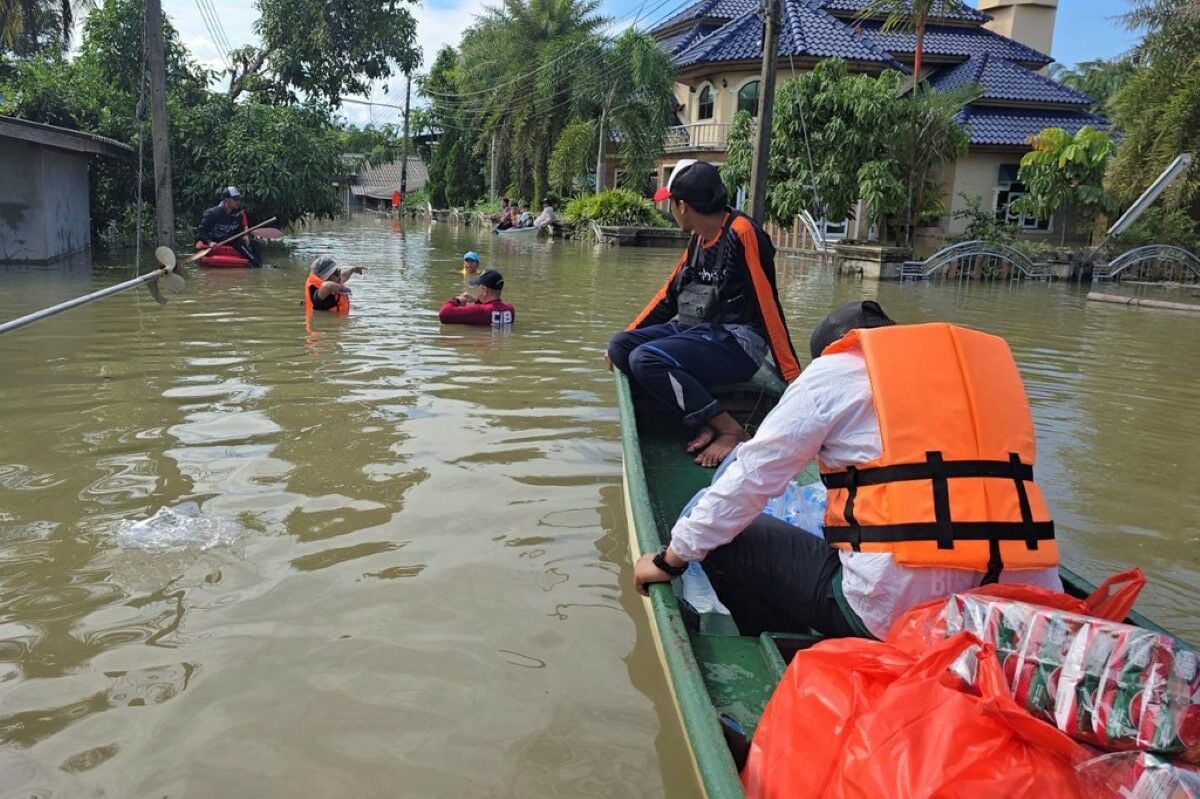Thailand floods claim lives, deforestation and dams blamed

Flooding has wreaked havoc across Thailand this year, claiming more than 50 lives in the north and at least 25 in the south. While climate change plays a role, Pianporn Deetes, Southeast Asia Programme Director for the NGO International Rivers, attributes specific man-made causes to the disaster.
Pianporn identified deforestation, dams, and river encroachment as three main factors exacerbating the situation. She highlighted the irony of deforestation, not only contributing to flooding but also causing the annual PM2.5 haze in northern Thailand.
This deforestation often results from clearing land to plant corn for animal feed and burning the fields, leading to what locals describe as a half flood, half haze dilemma.
Mining activities, especially in Myanmar’s Shan State, further compound the issue. The absence of journalism and civil society in Myanmar limits reports on these activities, which include extensive mining and monocrop plantations along the Mae Sai River, according to Pianporn.
“Satellite images show illegal mining operations, possibly gold mining, which have been unchecked since the coup in Myanmar three years ago,
“The deforestation significantly worsens flood impacts, leading to large volumes of mud and sediment inundating cities, villages, and towns.”
Flooding problem
Recovery efforts in Mae Sai continue, with heavy machinery still working to remove mud from people’s homes. Pianporn also considers the proliferation of dams upstream to contribute to the flooding in northern Thailand.
“The recent floods are partly due to the dams on the Mekong River, as heavy rains in southern Yunnan, China, necessitated water release.”
She noted that this increased water volume slowed drainage in flood-affected areas like Chiang Rai, where the gravity of the situation calls for international cooperation.
“Governments must communicate, especially China, as an upstream superpower, should heed the concerns of downstream neighbours.”
Thailand’s Office of Water Resources has reached out to China, emphasising the need for responsible dam operation to mitigate downstream flooding.
River encroachment is another key issue. Pianporn recounted a discussion with a historian who revealed that her foundation’s office, located on the outskirts of Chiang Rai, sits on an ancient river course. This historical oversight underscores the need for nature-based solutions rather than relying solely on flood walls, which can be perilous if breached.
Nature-based solutions
“In many global cases, flood walls prove dangerous. I advocate for nature-based solutions and, where necessary, relocating communities from high-risk areas.”
Pianporn champions the concept of sponge cities, which integrate urban areas with natural elements like wetlands and lakes. Relocating communities should be a last resort and must be done inclusively, ensuring fair compensation for affected residents.

The pressing task, Pianporn insisted, is to address these issues by working with nature, not against it. This requires collaboration from all stakeholders.
“Identifying the real problem and engaging multiple stakeholders, including experts, engineers, farmers, urban dwellers, and academics, is crucial. We need collective solutions rather than relying on the Royal Irrigation Department or the Ministry of Interior alone.”
Pianporn concluded that while the path forward necessitates widespread cooperation and meaningful consultations, she remains hopeful for collective action to resolve the flooding crisis, reported Bangkok Post.
Frequently Asked Questions
Here are some common questions asked about this news.
Why do deforestation and mining exacerbate flooding issues in Thailand?
Deforestation and mining reduce natural water absorption and increase sediment flow, intensifying flood severity.
How can ‘sponge cities’ help mitigate flooding in urban areas?
Sponge cities incorporate natural elements to absorb rainwater, reducing runoff and urban flooding impact.
What role do international relations play in managing Thailand’s flood crisis?
Cooperation with upstream countries, like China, is vital for responsible dam operations and mitigating downstream flooding.
What if historical river courses were considered in urban planning?
Recognising historical river paths could prevent building on flood-prone areas, minimising flood risk.
How can nature-based solutions offer a sustainable approach to flood management?
They enhance natural water management, reducing dependency on infrastructure that might fail during extreme events.
Latest Thailand News
Follow The Thaiger on Google News:


























